Do you have a vegetable garden, but find yourself struggling to keep the grass out? If so, you’re not alone. A lot of people have this same problem.
Gardening is a popular pastime for most people. Who doesn’t enjoy eating food from their own garden? However, if you’re a new gardener, you may have battled weeds before.
Weeds in a vegetable garden don’t refer to lovely flowering plants in your yard. Discuss the undesirable flora that grows in the soil and prevents your cultivated vegetables from developing.
A grass is any plant that grows in an unsuitable area. To thrive, vegetables require nutrients, water, and some breathing room. Grass does as well.
Unwanted species, such as leaves, blooms, seeds, and fruits that grow alongside the plants you are growing may clog nutrients and water flow to your plants. They can even compete for light, space, and air roots.
In this blog post, a few gardening experts will discuss some tips and tricks that will help you get rid of the grass and make your vegetable garden look great!
Why Does Grass Grow In The Garden: Causes
The causes of grass growing in the garden are many and varied. The most common cause is simply that the lawn has been allowed to grow too long and has seeded itself.
Rainwater goes into the soil and then rises as water vapor because it has been absorbed by the earth. Because this water has been condensed in plants, it contributes to the growth of grass [1].
Other causes include:
- The lawn has been mowed too short;
- There is too much thatch in the lawn;
- The soil is too compacted;
- There is not enough drainage in the garden;
- The grass is of a type that is particularly invasive;
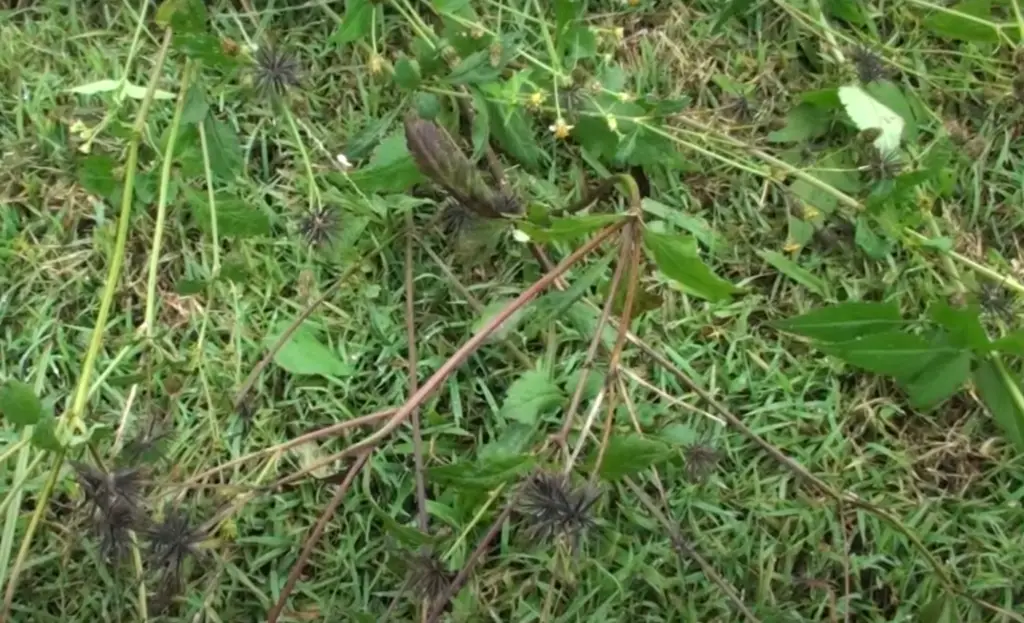
Whatever the cause, getting rid of grass in the vegetable garden can be a real challenge.
Weeds That Grow In Vegetable Gardens
Weeds are any grass, flower, or even vegetable that is not supposed to be growing in your garden besides the veggies you’re trying to cultivate. Vegetables and weeds require nutrients, water, and space to thrive.
When left alone with intentionally cultivated veggies, they consume the nutrients, water, and space away from the plants.
Vegetables that are deprived of essential elements like water, nutrients, and space usually become stunted and, in specific circumstances, single and die off without producing any yield.
So, when you discover an odd plant growing in your garden, experts advise that you act swiftly to eliminate it before it wreaks havoc on your vegetables [2].
How To Get Rid Of Grass In Vegetable Garden
Pull The Grass By Your Own Hand
The first and most common method is to manually remove the grass from your garden. This can be done by using a hoe or other gardening tool to dig around the plants and then pulling the grass by hand.
If you have a large garden, this process can be very time-consuming. In addition, it may be difficult to remove all of the roots, which can lead to regrowth.
You’ll have to dig up every single piece of it if you want to get rid of it completely, but it’s well worth the effort. To optimize your lawn’s development, you must prune and eliminate weeds.
You can guarantee that the grasses are removed effectively by employing environmentally responsible and non-toxic materials. Otherwise, weeds might root themselves and re-seed, growing even more severe.
Use Vinegar
If you’re looking for a more natural solution, vinegar might be the answer. Vinegar is an acidic substance that can kill the grass. You can either pour it directly on the grass or mix it with water and spray it on. Be careful not to get any on your vegetables, though!

You’ll want to use a higher concentration of vinegar for this method to be effective, so aim for at least 30% vinegar [3].
You can also try adding dish soap to your vinegar solution. This will help the vinegar stick to the leaves better and increase its effectiveness. Just be sure to rinse the area afterward so your vegetables don’t end up covered in soap residue.
Cover The Potential Grass Area With Black Plastic
This is a common method used by farmers. All you need is some black plastic and some rocks or bricks to hold it down. The heat from the sun will kill the grass underneath, leaving you with a nice, weed-free area.
You can also use newspapers in place of black plastic. Just be sure to cover the entire area so no light can get through. Again, you’ll want to put something heavy on top of the newspapers to keep them in place. This method works best when done in the fall, so the newspaper has time to break down over winter.
But once it’s dead, you’ll be able to plant your vegetables without any worry of weeds taking over.Pour Boiling Water
This is a cheap and effective solution for getting rid of grass in your vegetable garden. Boil a pot of water and pour it over the areas where you want to get rid of the grass. This will kill the grass and roots quickly. You may need to do this a few times to completely kill the grass [4].
If you have sensitive plants, be careful not to splash boiling water on them. You can also use a kettle or teapot instead of boiling a pot of water on the stove.
Mulching The Garden Beds
Mulching is one of the most effective ways to get rid of grass in your vegetable garden. It also helps to improve the soil quality and keeps the roots of your plants cool and moist.
You can use organic materials like straw, leaves, or wood chips as mulch.
Spread a thick layer of mulch around your plants and garden beds. Be sure to keep it away from the stems of your plants so that it doesn’t cause rot.
Solar Sterilization
Solar radiation is the most effective weed control technique in a vegetable garden, especially during the summer months of July and August.
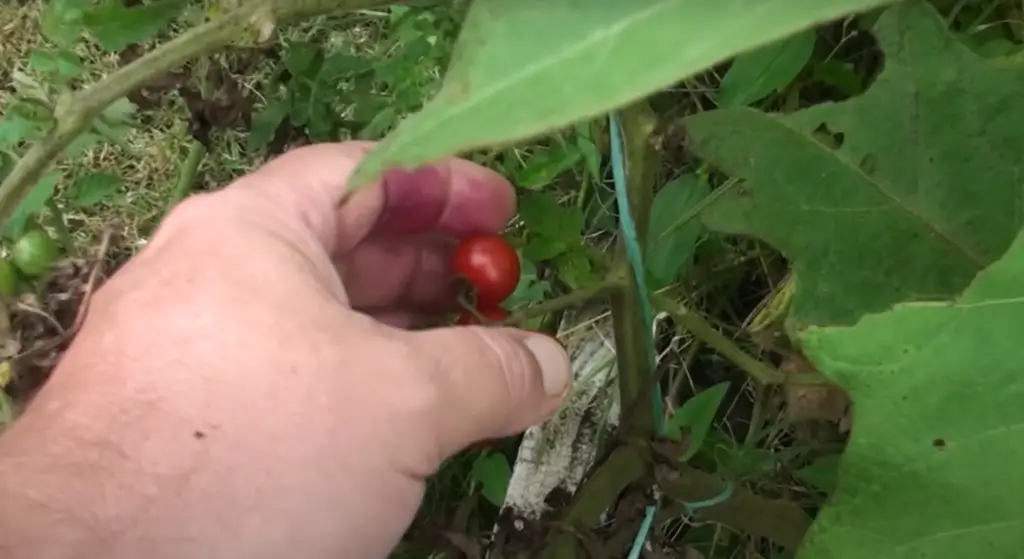
Start by removing any weeds from the afflicted region by hand pulling them with their roots.
Finally, drape a dark plastic cloth (not transparent plastic) over the surface to attract the sun’s rays, and heat, and sterilize the soil beneath it [5].
Install A Weed Barrier
One of the best ways to keep grass out of your vegetable garden is to install a weed barrier. This can be done by laying down a layer of cardboard or newspapers over the area where you want to grow your vegetables.
Then, cover the cardboard or newspaper with a layer of mulch, such as straw or wood chips. The weed barrier will prevent sunlight from reaching the grass, which will eventually kill it.
Try Preen Weed Killer
If you’re looking for an effective way to get rid of weeds in your garden, Preen weed killer may be a good option.
This product is designed to kill a variety of common lawn and garden weeds, including grasses. It’s important to follow the instructions on the label carefully when using this product.
Apply it early in the season before weeds have a chance to take over your garden [6].
Preen weed killer is available at most home improvement stores and online retailers. Prices start at around $15 for a small bottle. Be sure to read reviews from other customers before purchasing this product. Overall, Preen weed killer is an effective way to control weeds in your garden without harming your vegetables.
Cultivation Method
This involves tilling the soil to a depth of at least six inches and then removing any roots or rhizomes that you find. You’ll need to do this every few weeks to keep the grass from coming back.
If you have a lot of grass, you may want to consider renting a rototiller from your local hardware store. This will make the job a lot easier and quicker.
Once you’ve removed all the roots and rhizomes, you should add a layer of mulch to your garden bed. This will help prevent weeds from taking hold and will also help retain moisture in the soil.
Uproot The Grass By Digging
When you have time, go out to your garden and dig around the perimeter of the grassy area. You can use a shovel or even a spade to help loosen up the roots of the grass. Once you’ve loosened up the roots, you can then pull them out by hand.
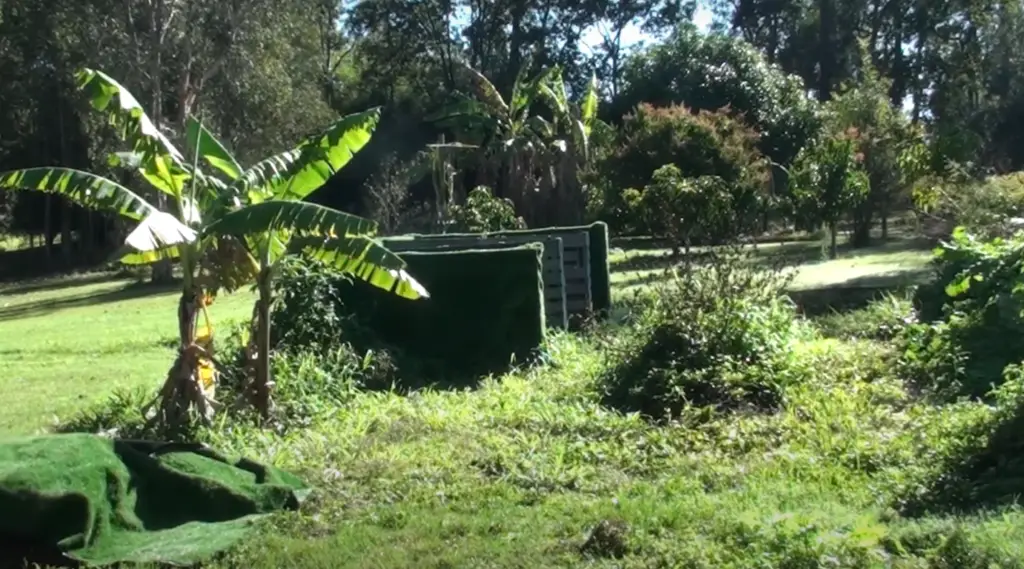
This method is effective, but it does take some time and effort.
Uproot The Grass By Tiling The Soil
This process is called solarization and it involves covering the area with clear plastic sheets. The heat from the sun will then kill the grass.Use A Sod Cutter
Before you choose a sod cutter to eliminate any unwanted grass in your vegetable garden, you should know a few things.
One, it comes with an expense. In addition, two, it may be the most effortless approach to get rid of the grass.
A rented one is another option. Furthermore, many firms provide a motorized sod cutter for hire. It may be hired for the day or by the hour, and most businesses also offer delivery.
These motorized sod cutters are simple to use. All you have to do is study the instruction manual and become familiar with its standards and capabilities. Because they just operate in a straight line, they require a lot of room to function[7].
If your yard is enormous, you may choose a mechanical sod cutter.
Make Grass Eliminating Spray Using Alcohol
Isopropyl alcohol, also known as rubbing alcohol, can be used to kill the grass. You can purchase it at any pharmacy or grocery store. It is relatively inexpensive and easy to find.
To create your own grass-killing spray using rubbing alcohol, mix one part of alcohol with two parts of water in a spray bottle. Then, simply spray the mixture onto the grass you wish to kill. The alcohol will dry out the blades of grass, causing them to turn brown and die.
Use Soap Water To Get Rid Of Grass
Another way to get rid of grass is by using soap and water.
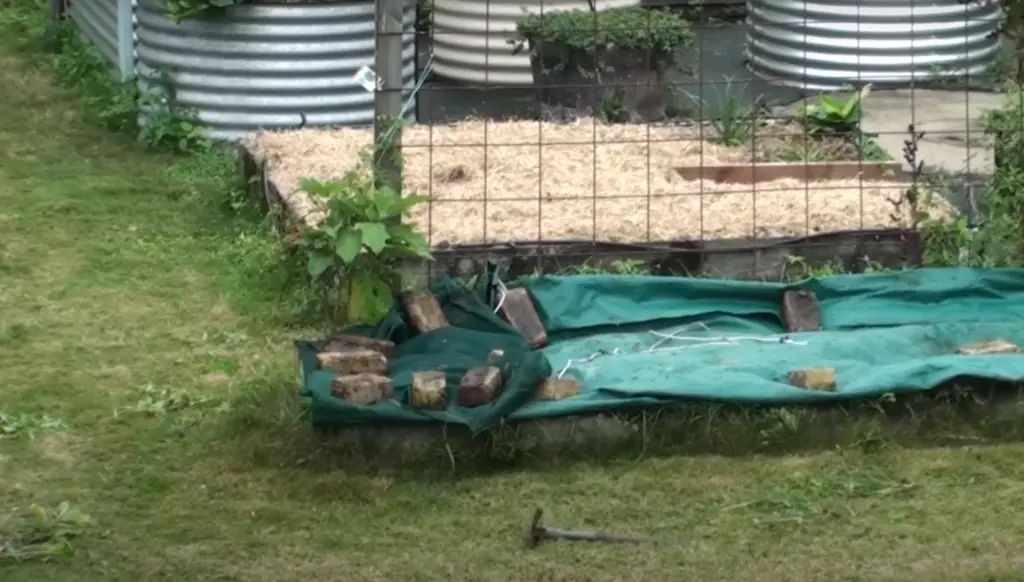
For this method, you will need dish soap and water. Simply mix these two ingredients together in a spray bottle and apply them to the grass you want to get rid of.
The soap will help to break down the blades of grass, causing them to turn brown and die.
How You Can Prevent Grass From Further Growing In Your Garden
Make Sure To Decontaminate Your Garden Of All Existing Weeds
The first step in getting rid of grass in your vegetable garden is to make sure that you remove all existing weeds. This will prevent the spread of grass and other unwanted plants. You can do this by hand or with a tiller.
Once you have removed all the weeds, it is important to decontaminate the soil. This can be done by solarizing the soil or using an herbicide. Solarizing the soil is a process of exposing the soil to intense sunlight for a period of time. This will kill any remaining weed seeds and grassroots.
Using an herbicide will also kill any remaining weed seeds and roots, but it is important to use one that is safe for vegetables.
Be Watchful For Future Grass Growth
After you have taken the necessary steps to prevent grass from growing in your garden, it is important to be watchful for future growth. You can do this by regularly inspecting your garden and removing any new weeds that may appear.
Construct Raised Garden Beds
This will create a barrier between the soil and the grass, making it more difficult for the grass to take root.
Minimize Spacing Between Your Plants
Planting your vegetables close together is one of the best ways to prevent grass from taking over your garden.
This is because grass needs sunlight to grow, and if there’s not much space between your plants, the sun won’t be able to reach the ground.In addition, planting closely will also help to shade out any existing grass that might be trying to take over your garden.
Avoid Unintentionally Growing Weeds
Weeds are opportunists. They will take over any open space in your garden, including the space between your vegetable plants. To prevent weeds from taking over, make sure to keep your garden free of debris and dead plant matter. Also, be sure to pull weeds as soon as they appear.
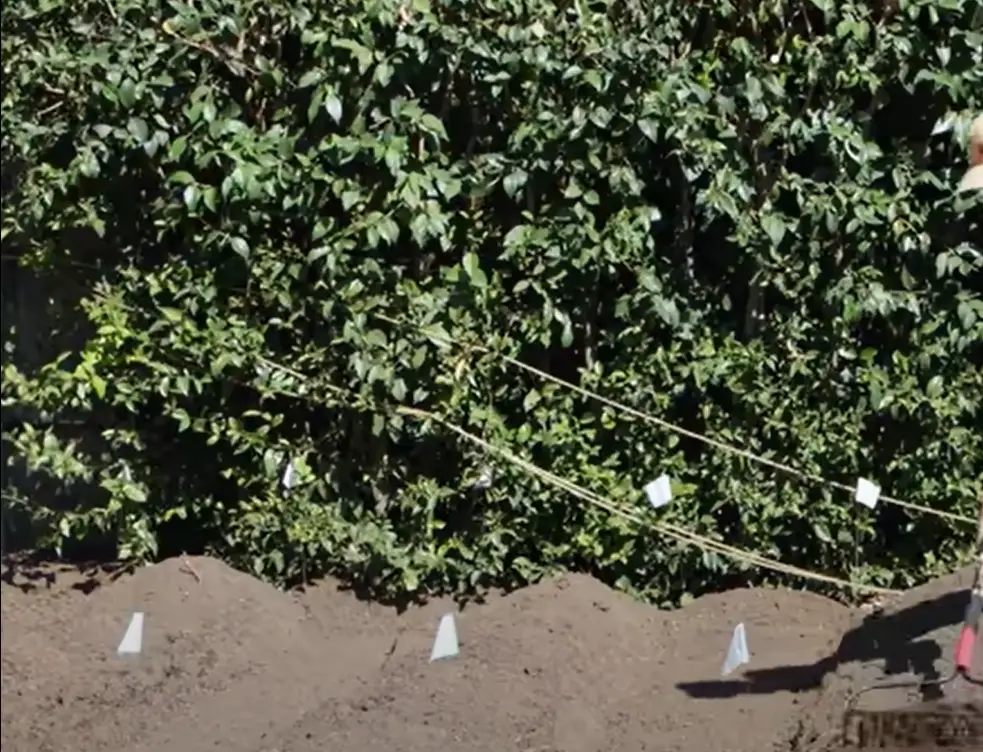
Another way to avoid unintentionally growing weeds is to use mulch. Mulch is a layer of material (usually organic) that you spread over the soil surface. Mulch helps to suppress weed growth by blocking sunlight and preventing weed seeds from germinating. Plus, it can help to improve the appearance of your garden and protect your plants from extreme weather conditions.
Comparative Analysis: Methods to Eliminate Grass in Your Vegetable Garden
Maintaining a thriving vegetable garden requires careful attention to weed management. Grass can be a persistent intruder that competes for nutrients and space with your valuable crops. This table presents a comparison of different methods to effectively get rid of grass in your vegetable garden, helping you make an informed choice for a lush and productive garden.
| Method | Effectiveness | Effort Required | Environmental Impact | Cost |
|---|---|---|---|---|
| Hand Pulling | Medium | High | Low | Low |
| Mulching | High | Low | Low | Medium |
| Tilling | Low | High | Medium | High |
| Herbicides | High | Low | Medium | High |
| Solarization | Medium | Medium | Low | Medium |
Here’s a breakdown of the indicators used in the table:
- Effectiveness: This indicator measures how well each method eliminates grass. Methods are ranked as “Low,” “Medium,” or “High” based on their effectiveness in eradicating grass.
- Effort Required: This factor assesses the physical effort needed to implement each method. Methods are ranked as “Low,” “Medium,” or “High” in terms of labor involvement.
- Environmental Impact: This category evaluates the ecological consequences of each method. Rankings are provided as “Low,” “Medium,” or “High” based on the potential impact on the environment.
- Cost: The cost of each method is categorized as “Low,” “Medium,” or “High” based on the financial investment required.
Method Explanations:
- Hand Pulling: While effective, hand pulling requires substantial effort and time. It has a minimal environmental impact and is cost-effective.
- Mulching: Highly effective, mulching reduces weed growth, conserves moisture, and adds organic matter to the soil. It requires low effort, has a minimal environmental impact, and a moderate cost.
- Tilling: Tilling can disrupt weed growth, but it’s less effective for grass control. It demands high effort, has a moderate environmental impact, and can be costly.
- Herbicides: Herbicides are highly effective but can have environmental implications. They require low effort, have a moderate to high environmental impact, and can be costly.
- Solarization: This method involves covering the soil with plastic to heat and kill weeds. It has a moderate effectiveness, moderate effort requirement, low environmental impact, and a moderate cost.
Choosing the right method depends on your priorities, such as the balance between effectiveness, effort, environmental considerations, and budget constraints.
FAQ
What kills weeds but not vegetable plants?
One cup of salt combined with two cups of hot water may be enough. Gardeners have used full-strength apple cider or white vinegar to spray their lawn, but it is ineffective as rain dilutes its power. Avoid applying any of these on your grass or the plants in your flowerbeds and borders because they may harm them [8].
How do I kill the grass next to my garden?
The best way to kill grass next to your garden is by smothering it. You can do this by laying down a thick layer of newspaper or cardboard, and then covering it with mulch. This will block out the sun and suffocate the grass.
Another option is to use a herbicide like a glyphosate, but be careful not to get any on your vegetables. You can also dig a trench around your garden bed and line it with plastic sheeting. The grass will die when it tries to grow through the barrier.
Whichever method you choose, make sure you’re consistent so the grass doesn’t come back. With a little effort, you can have a beautiful vegetable garden that’s free of unwanted grass.
How do I turn my grassy area into a vegetable garden?
If you’re starting a vegetable garden from scratch, you’ll need to clear the area of grass and weeds. The easiest way to do this is with a chemical herbicide, such as glyphosate. Glyphosate will kill all vegetation, so be careful not to spray any areas you don’t want to remove vegetation from.
Once the area is cleared, you can till it and add compost or other organic matter to improve the soil quality. Then, you’re ready to plant your vegetables!
If you have an existing vegetable garden that’s overrun with grass, you can use a physical barrier like black plastic to smother the grass and prevent it from growing. You can also try using a hand-held weeder or hoe to manually remove the grass.
How do I get rid of weeds in my vegetable garden before planting?
Weeding is a necessary evil when it comes to gardening, but there are ways to make the process less painful. One way to prevent weeds from taking over your garden is to use mulch.
Mulch helps shade the ground and prevent weed seeds from germinating. You can also use landscape fabric or black plastic to smother weeds. Be sure to remove any existing weeds before laying down the fabric or plastic.
How long after applying Roundup can I plant vegetables?
Gardeners are advised to wait three full days after applying Roundup Weed & Grass Killer Super Concentrate, according to the manufacturer. This waiting period varies with different Roundup and herbicide products, so check the label for instructions [9].
What is the easiest way to remove grass?
The easiest way to remove grass is with a shovel. You can also use a hoe or a spade, but a shovel is the quickest tool for the job. Simply dig up the grass and roots in sections, then lift them out of the ground. You may need to repeat this process several times to get all of the grass out of your garden.
Once you have removed the grass, you can till the soil to prepare it for planting. If you have any large clumps of dirt or sod, you can break them up with your shovel or a hoe. Then, use a rake to level off the surface of your garden bed. You’re now ready to plant!
Is pulling weeds a waste of time?
Weeding is unavoidable in the vegetable garden. It’s especially important to stay on top of things early in the season before your plants have a chance to become overwhelmed. But weeding can be tedious, and it’s easy to wonder if it’s really worth all the effort.
Here’s the thing: pulling weeds is only a waste of time if you’re not also taking steps to prevent them from coming back. If you’re regularly removing weeds and then taking measures to keep them from growing again, you’ll eventually get ahead of the game.
What natural methods can I use to remove grass from my vegetable garden?
You can try using methods like smothering with newspaper or cardboard, solarization, using vinegar or boiling water, and employing manual techniques like hand-pulling or using a hoe to remove grass from your vegetable garden.
Are there any herbicides that are safe to use in a vegetable garden to eliminate grass?
Yes, there are selective herbicides like Sethoxydim and Fluazifop-P-Butyl that target grassy weeds without harming most vegetable plants. Always read and follow the label instructions carefully to ensure safe and effective use.
What should I do before planting vegetables in a grass-infested garden?
Before planting, it’s important to clear the grass by using techniques such as tilling, mowing closely, or using a sod cutter. You can also consider using a pre-emergent herbicide to prevent grass and weed growth before planting your vegetables.
Can mulching help prevent grass from growing in my vegetable garden?
Yes, mulching can be very effective in preventing grass growth in your vegetable garden. Apply a layer of organic mulch, such as straw, wood chips, or leaves, to smother existing grass and create a barrier against future growth.
What steps can I take to maintain a grass-free vegetable garden?
To maintain a grass-free vegetable garden, practice regular weeding, cultivate the soil to disrupt grass growth, and use a combination of mulching and hand-pulling to keep unwanted grass at bay. Additionally, consider using landscape fabric or plastic mulch for long-term weed control.
Are there any mechanical tools that can help me remove grass from my vegetable garden?
Yes, there are mechanical tools like sod cutters, manual weed pullers, and edging tools that can aid in removing grass from your vegetable garden. These tools can help you efficiently and effectively tackle grass infestations.
Can I use a homemade weed killer to get rid of grass in my vegetable garden?
While homemade weed killers like vinegar solutions or saltwater sprays may have some efficacy, they can also harm your vegetable plants and disrupt the soil ecosystem. It’s generally safer to use commercially available herbicides that are specifically designed for selective weed control in vegetable gardens.
What cover crops can I plant to suppress grass growth in my vegetable garden?
Cover crops like rye, oats, and buckwheat can help suppress grass growth in your vegetable garden. These crops compete with the grass for nutrients and sunlight, reducing its vigor and giving your vegetables a better chance to thrive.
Are there any innovative techniques for grass removal in a vegetable garden?
Yes, you can try innovative techniques like using a propane torch to burn grass, using a steam weeder, or applying natural plant-based herbicides. These methods may offer alternative solutions for removing grass while minimizing the impact on your vegetable plants.
Useful Video: Preventing & Getting Rid of Weeds/Grasses in Vegetable Garden Beds
References:
- https://worldsustainable.org/how-to-get-rid-of-grass-in-vegetable-garden/
- https://gardeningbank.com/how-to-get-rid-of-grass-in-vegetable-garden/
- https://gardeningelsa.com/remove-grass-in-a-vegetable-garden/
- https://worldsustainable.org/how-to-get-rid-of-grass-in-vegetable-garden/
- https://bovees.com/how-to-get-rid-of-grass-in-vegetable-garden/
- https://www.preen.com/
- https://gardeningelsa.com/remove-grass-in-a-vegetable-garden/
- https://www.hgtv.com/outdoors/flowers-and-plants/how-to-kill-weeds-without-hurting-your-garden
- https://www.greenmatters.com/p/is-roundup-safe-vegetable-garden





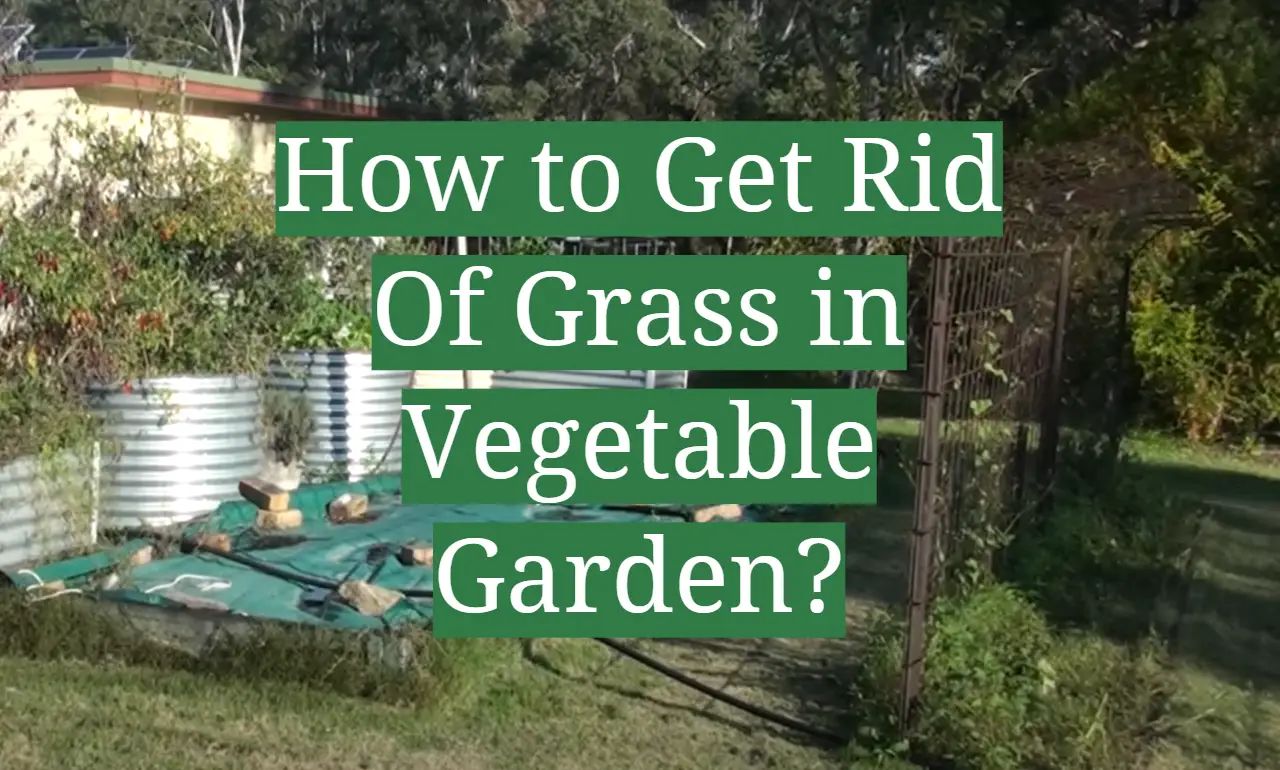



Leave a Reply
View Comments